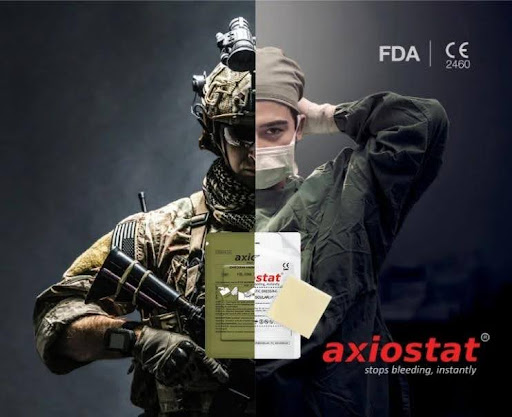Wounds have been a part of human history for as long as mankind has existed. Whether caused by accidents, combat, illness, or immobility, wounds challenge the body’s ability to heal and restore itself. Among the most persistent and difficult wounds to manage are pressure ulcers, also known as bedsores or decubitus ulcers. These injuries result from prolonged pressure on the skin, especially in patients who are bedridden or have limited mobility. Left untreated, pressure ulcers can progress into serious, life-threatening conditions.
Over time, our approach to managing these wounds has evolved dramatically — from primitive methods involving simple cloth bandages to sophisticated biomaterial-based dressings that not only protect the wound but actively promote healing. However, despite advancements, many still rely on outdated methods, overlooking modern solutions like chitosan-based wound care technology that can make a significant difference in healing outcomes.
Let’s explore how far we’ve come in treating wounds and pressure ulcers, and why it might be time to leave behind the standard methods of the past.
The Early Days: Basic Dressings and Trial-and-Error
Centuries ago, wound care was rudimentary at best. In ancient civilizations like Egypt and Greece, early healers used natural materials such as honey, animal fats, and herbal poultices to cover wounds. Linen strips were commonly used as bandages, and while they provided basic protection, their primary function was simply to shield the wound from dirt and insects rather than actively promote healing.
Pressure ulcers, though poorly understood at the time, were a significant concern for immobile patients. Without proper knowledge of skin integrity and circulation, care largely consisted of repositioning patients sporadically and applying rudimentary dressings to prevent infection. Unfortunately, outcomes were often poor, with high rates of infection and mortality.
As time progressed, antiseptics like iodine and carbolic acid emerged in the 19th century, bringing a more scientific approach to wound care. These developments, although groundbreaking, still relied heavily on passive wound coverage — gauze and cotton remained the mainstays of treatment.
The Standard Gauze Era: A Step Forward, but with Limits
Moving into the 20th century, sterile gauze became the gold standard for wound management. Pressure ulcers were managed primarily with regular cleaning, debridement, and layered gauze dressings to absorb exudate and protect the wound bed. This method helped reduce infections compared to earlier practices and was widely adopted in hospitals, nursing homes, and even home care settings.
However, while gauze is helpful in basic wound care, its limitations became increasingly apparent, especially for chronic wounds like pressure ulcers. Gauze is primarily passive — it absorbs fluid but does not actively participate in the healing process. Frequent dressing changes are required, which can disturb new tissue formation and cause pain. Moreover, gauze does little to address the complex biological factors at play in chronic wounds, such as inflammation, infection, and impaired cell regeneration.
Despite these limitations, many caregivers and healthcare providers still rely on standard gauze today, partly out of habit and partly due to lack of awareness of better alternatives.
Understanding the Complexity of Pressure Ulcers
Pressure ulcers are not ordinary wounds. They are the result of prolonged pressure that cuts off blood supply to the skin and underlying tissues, leading to tissue breakdown and necrosis. Factors such as poor nutrition, underlying medical conditions (like diabetes), and reduced mobility increase the risk of developing these ulcers.
Treating pressure ulcers effectively requires more than just covering the wound. It involves moisture balance, infection control, pain management, and stimulation of tissue regeneration. Passive methods like traditional gauze often fall short of providing the comprehensive support that complex wounds demand.
This is where modern wound care technologies have made a significant impact.
The Rise of Advanced Wound Care: Enter Chitosan-Based Solutions
Today, wound care has entered a new era — one defined by bioactive dressings that do more than just cover wounds. Among the most promising innovations is the use of chitosan, a natural biopolymer derived from the shells of crustaceans.
Chitosan-based dressings, such as Axiostat® and MaxioCel®, are specifically designed to address the multifaceted challenges of chronic wounds like pressure ulcers. Chitosan possesses remarkable properties that make it ideal for wound healing:
- Hemostatic action: Chitosan promotes rapid clot formation, which is crucial for managing wound bleeding and preventing excessive fluid loss.
- Antimicrobial activity: It naturally inhibits bacterial growth, reducing the risk of infection in vulnerable wounds.
- Moist wound healing environment: Chitosan dressings maintain optimal moisture balance, preventing the wound from drying out or becoming overly saturated.
- Pain-free removal: Unlike traditional gauze that can stick to the wound bed, chitosan dressings form a soft gel on contact with wound exudate, allowing painless dressing changes.
- Supports tissue regeneration: Chitosan helps stimulate cell growth and tissue regeneration, essential for healing pressure ulcers that have extended into deeper tissue layers.
These benefits make chitosan-based dressings a far superior choice compared to passive gauze, particularly for chronic and complex wounds.
Bridging the Gap: Why Some Still Use Outdated Methods
Despite clear advantages, the adoption of advanced wound care solutions like chitosan dressings has not been universal. Many caregivers and facilities continue to use traditional gauze, often due to cost concerns, lack of training, or simply following longstanding routines. Unfortunately, this reliance on outdated methods can delay healing, increase the risk of complications, and ultimately result in higher long-term care costs.
Education and awareness are key. As more healthcare providers understand the science behind advanced dressings, there is a growing shift toward adopting modern solutions that improve patient outcomes and quality of life.
Conclusion: Time to Embrace Modern Wound Care
The journey of wound care — and particularly pressure ulcer management — has come a long way from the days of linen wraps and passive gauze. With advanced technologies like chitosan-based dressings now available, we have the tools to transform wound care from passive management to active healing.
While standard gauze may still have a role in managing minor wounds, chronic and complex wounds like pressure ulcers deserve more sophisticated care. Solutions such as Axiostat® and other advanced chitosan dressings are not just innovations; they are necessities for modern wound care.
As we continue to advance in medical science, it’s time to leave behind outdated practices and embrace technologies that empower faster, safer, and more effective healing.
 A collaborative study with Harvard Medical School
A collaborative study with Harvard Medical School










